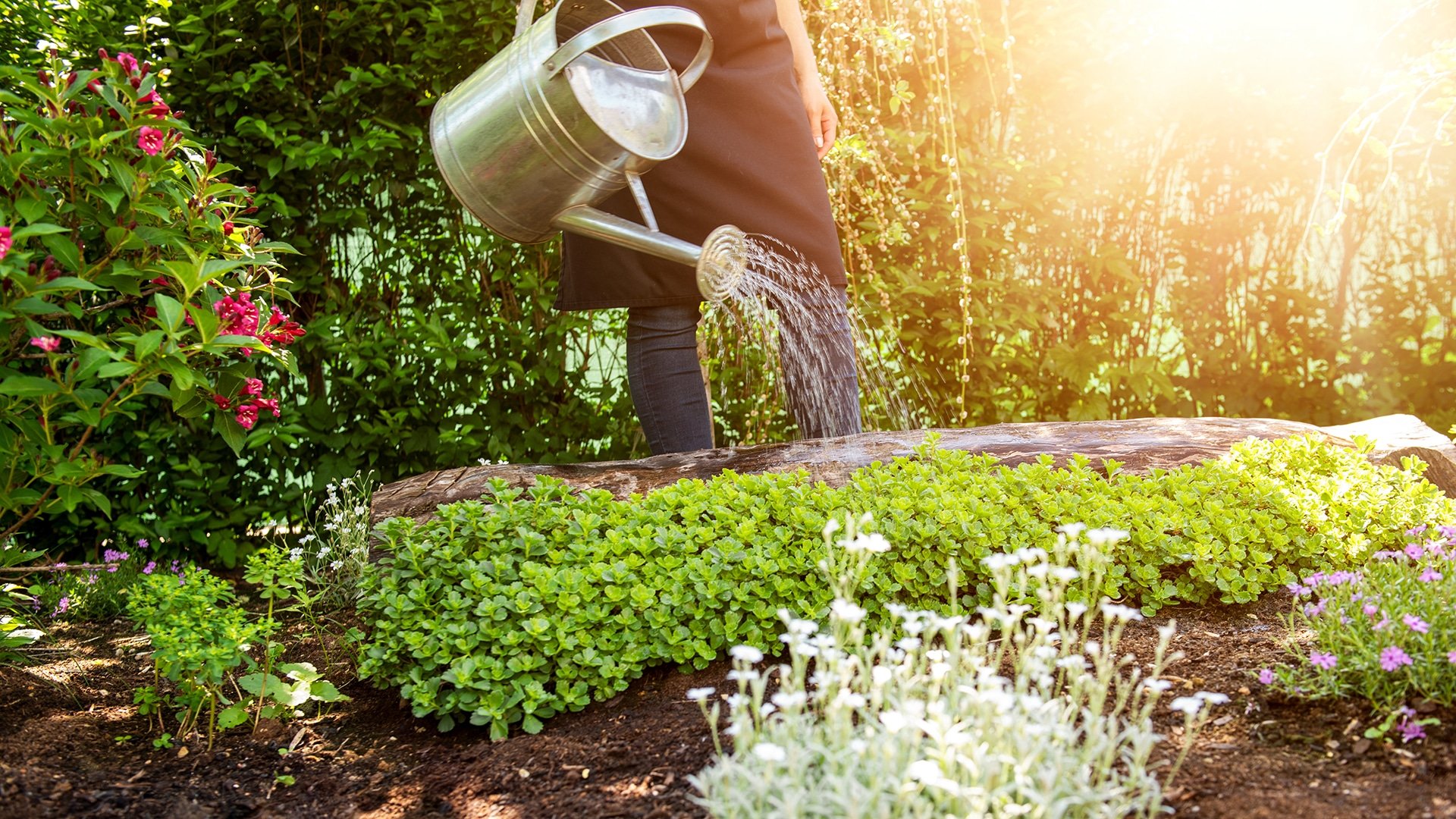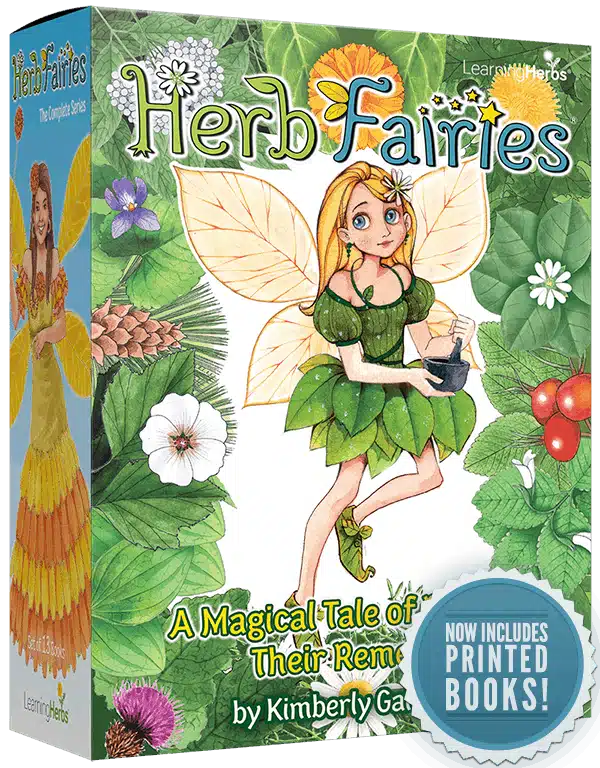The light shifts and lengthens and once again we find ourselves drawn to the fields and gardens, taking with us the experiences and dreams from seasons past.
As much as spring is about growth, it is also about tending. Tending the soil to ensure what we plan to grow will come to harvest, weeding invasive species, turning or starting up compost, managing pests, using watering strategies, incorporating native plants at the right time to support local nature, and so much more. Keeping the cycle of nourishment and balance in a landscape makes for resilient harvests and, most importantly, a healthy ecosystem.
From tending to gathering, there’s a sense of interconnection felt from the experience that in turn makes us feel supported. Read on for my spring gardening tips, plus four healing herbs to grow and gather.
Spring Gardening Tips: A Time of Renewed Reflections
When looking at a flower in the wild, I think about the rain that has nourished the soil to support the plant in blooming and how that beautiful flower will soon produce seeds. I then observe the surrounding environment to see the conditions and other plants and trees that have grown along with this flower. These reflections build my connection and relationship with nature and allow me the opportunity to apply the guidance received within my gardening approach.
Gardeners have the responsibility of taking nature’s lead because what we plant affects our local ecosystems. Spring is a great seasonal time to reflect on the ways in which we can restore balance in our lives, gardens, and communities by taking our cue from nature.
A Time for Making Space
As all the plants are reaching for the sky, ready to send forth their flowers, so are the less-than-desired weeds. Take this opportunity to seek out those unwanted weeds before they go to seed. Weeds are a vital part of any garden, but there are some that make a garden less friendly, like foxtails (Setaria spp.), crane’s bill geranium (Erodium cicutarium), bindweed (Calystegia soldanella), and wild lettuce (Lactuca virosa), to name a few I’ve been weeding out.
And then we have weeds that are more friendly and nutritious, like dandelion (Taraxacum officinale), mallow (Malva spp.), chickweed (Stellaria media), nettles (Urtica spp.), lamb’s quarters (Chenopodium album), and more! When weeding we’re not only making room for existing plants to flourish; we’re also encouraging weeds that are more beneficial for the environment and our kitchen table.
A Time for Rebirth
Being surrounded by new growth gives one a sense of renewed energy and inspiration. Enjoying bitter weeds as we step into spring supports the digestive system in refreshing itself again from fall and winter diets. Spring sends forth so much vegetation exactly for this seasonal practice. My favorite way to consume edible weeds is either in a salad or by making infused vinegars to then be enjoyed on my summer salads. The first plant plucked to eat in the spring is like a ritual, an initial communion with the new season.
A Time to Grow
Growing isn’t always about pretty petals and future harvests. Growing can also be setting intentions for the future. It can be growing your compost or even growing soil to be used in the seasons to come. It can be growing mint in a tiny pot. It can be growing your connection to nature by sitting in stillness next to the closest flower patch to you. Spring has a way of showing us that there is growth to be had and seen everywhere, just like those dandelions you see growing through concrete. Growth looks and feels different for everyone.
A Time to Bloom
Surrounded by spring’s flowers, we feel the vibration of the solar energy that has guided them to bloom. The fullest expression of a plant is when it is in flower. Flowers carry a type of energetic medicine that we can learn how to use by allowing ourselves to be captivated by the season that surrounds us, by being present in the celebration of it all before the onset of summer sends flowers to seed. To be in bloom is to be present. And in the spirit of celebrating the season with spring gardening tips, let’s highlight a few herbs to grow and gather.
Dandelion (Taraxacum officinale)
Dandelion, a North American introduced species, is one of the first “weeds” to sprout and bloom, offering bees something to forage early in the season. The young leaves, flowers, and roots can be prepared and enjoyed in myriad ways. It doesn’t take a lot of flowers to go to seed for this weed to take over, making it a great abundant candidate to make use of in the kitchen and apothecary. I feel dandelion is one of those quintessential spring herbs because of its affinity to the liver, which filters blood from our digestive tracts, making this weed a suitable spring ally.
California Poppy (Eschscholzia californica)
This mesmerizing wildflower, native to California and Mexico, is a springtime staple that is easily cultivated. California poppies are great at stopping soil erosion, making them essential for native ecosystems and a good seed option to sow after lawn removal. Because of development, much of California poppy’s natural habitat has been lost. What better way to help fill this void than to introduce them to gardens with appropriate growing conditions? This tender annual wildflower can bloom from spring to fall in some gardens. (Note that California poppy can become invasive in some regions.)
Thanks to the indigenous stewards of this plant’s native land, we know it carries medicinal constituents. To this day it is used traditionally by indigenous caretakers and has also been adopted by Western herbalism to support various conditions. California poppy is traditionally used for inflammation, to relieve pain, and for those that could use some relaxation and rest. The entire plant, when in flower, is used and some people also incorporate the seeds.
Rose Geranium (Pelargonium graveolens)
As the wildflowers excitingly usher in spring, rose geranium follows with aromatics intensifying and blossoms beginning to form. The timing of these blooms, native to Africa, serves as a gentle reminder of summer’s onset, where energy can become faster paced, perhaps creating a hurried or rushed feeling. The aromatic properties of this resilient perennial move you into lighter moods, helping to alleviate tension and stress.
Rose geranium attracts butterflies and is rather drought tolerant. If given space and supplemental water, it can become invasive for some landscapes. Since I use rose geranium like an herb, I am happy to keep up with its growth. I enjoy using this plant mainly as an aromatic and have made a lovely rose geranium syrup that can be used in desserts and cocktails. The flowers can be used to pretty up all sorts of edible delights, too!
Stinging Nettle (Urtica dioica)
Nettles are one of those naturalized wild herbs native to Africa, Asia, and Europe that you don’t see cultivated much in gardens. Their sting allows them to be safe havens for pollinators. This year we’ve been graced with a few spontaneous patches in our garden and, unlike before, I’ve let a few of them go to seed so they can increase in the seasons to come.
Every part of this herb is useful: roots, leaves, and seeds. Nettle is a powerhouse of a spring herb that is highly nourishing to the blood and can flush out excess water thanks to its diuretic properties. There are many other healing constituents and uses for nettle, which makes them a great ally to keep nearby. They can be made into nourishing infusions as well as nutritious food.
Note: Those pregnant or planning to become pregnant, breastfeeding, or taking other medications should always consult with a professional health practitioner before taking herbal medicine.
A Season for Growing: Spring Gardening Tips
















what is the name of the plant in the first image? It is frustrating when a website identifies all the herbs I know but does not identify the one mystery plant that I’ve been trying to learn about! help?
Hello Cynthia,
The first single plant image is a mallow. I believe it is Malva perfecta. I hope that helps!
Kind regards,
Karin Rose